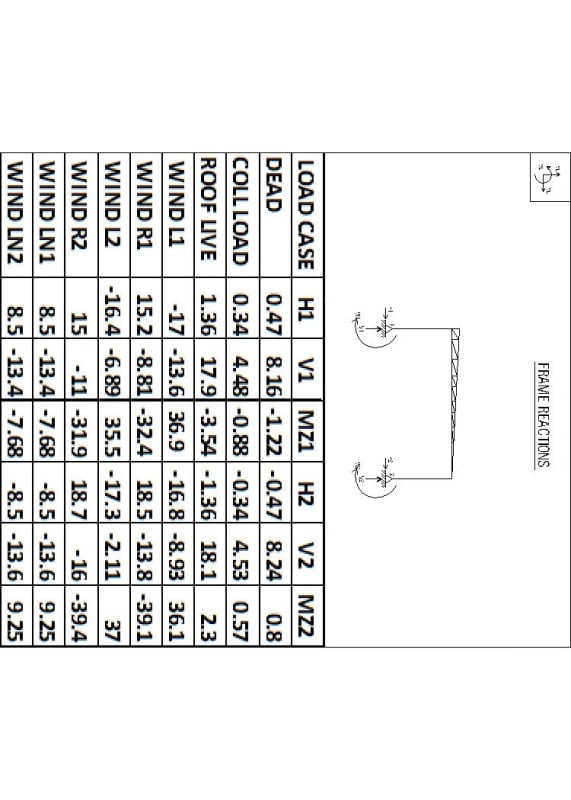MSUK90
Structural
- Jan 29, 2020
- 155
Dear all,
I have to clarify the load combination to check overturning affects for an industrial shed footing. The reaction for different loads provided by steel designer are attached in the picture. I just need to confirm that when I use a 0.6D+W combination, do I apply "0.6" factor to horizontal loads and moments also? Also, is there a possibility for the steel designer to consider the supports to be hinged/pinned(to avoid moment) and design steel structure for lateral loads too(using some sort of LLRS)? The steel designer says that he doesn't have any other option but to use 'Fixed Support' in his calculations(especially for pipe section columns supporting a pipe truss). I am getting footings of very big sizes which the client obviously doesn't like. Sorry if something here is very general as I don't have much experience with steel design.

I have to clarify the load combination to check overturning affects for an industrial shed footing. The reaction for different loads provided by steel designer are attached in the picture. I just need to confirm that when I use a 0.6D+W combination, do I apply "0.6" factor to horizontal loads and moments also? Also, is there a possibility for the steel designer to consider the supports to be hinged/pinned(to avoid moment) and design steel structure for lateral loads too(using some sort of LLRS)? The steel designer says that he doesn't have any other option but to use 'Fixed Support' in his calculations(especially for pipe section columns supporting a pipe truss). I am getting footings of very big sizes which the client obviously doesn't like. Sorry if something here is very general as I don't have much experience with steel design.


![[peace] [peace] [peace]](/data/assets/smilies/peace.gif)